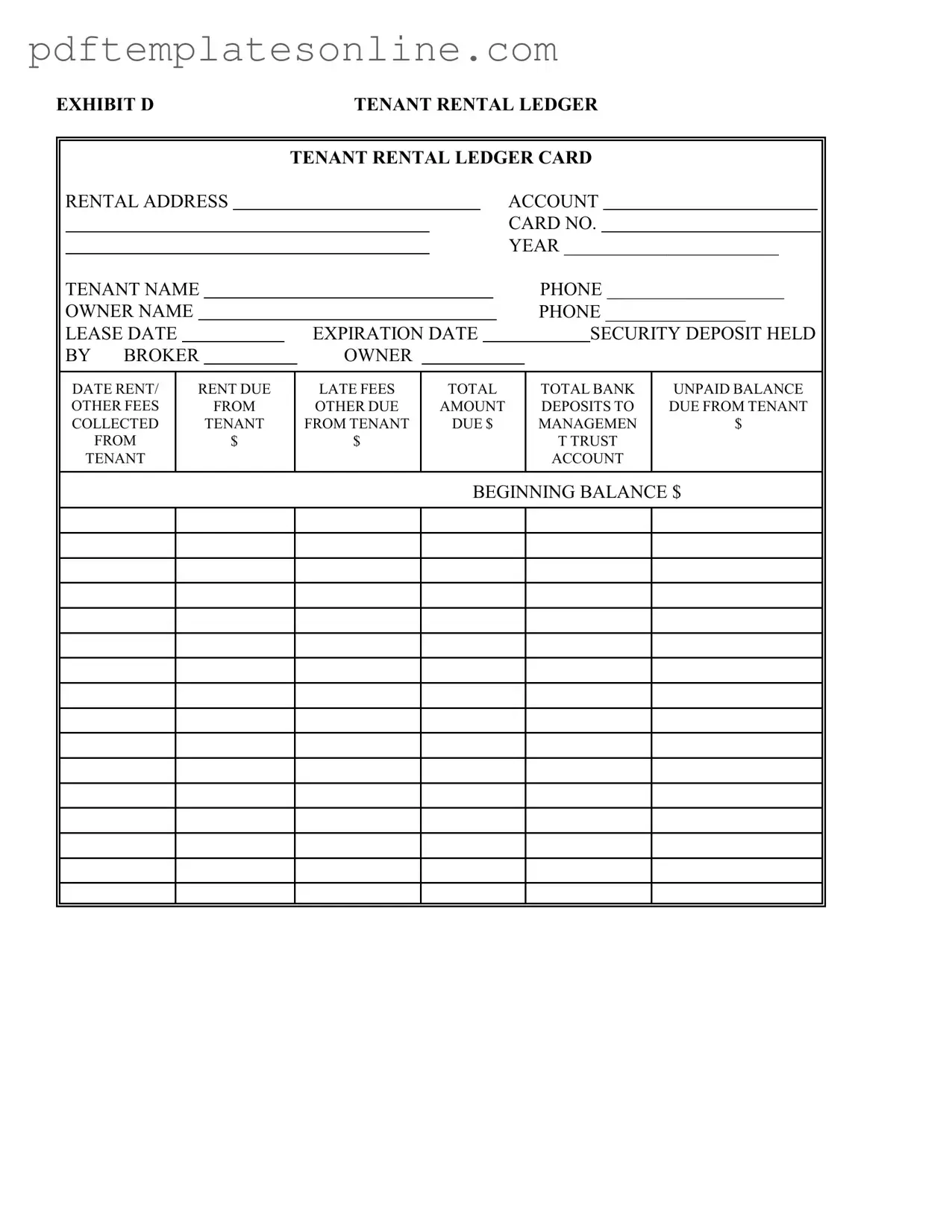Filling out the Tenant Ledger Card form can seem straightforward, but many people make common mistakes that can lead to confusion or disputes later on. One frequent error is neglecting to include the tenant's name clearly. This section is crucial as it identifies who the ledger pertains to. Without a clear name, it can be challenging to track payments or address issues that arise.
Another mistake often made involves the lease dates. People sometimes forget to fill in the lease date and expiration date. These dates are essential for understanding the timeline of the rental agreement. If these fields are left blank, it can create ambiguity about the terms of the lease, leading to potential misunderstandings between tenants and owners.
In addition, errors can occur in the financial sections of the form. For instance, tenants might miscalculate the total amount due. This includes rent, late fees, and any other charges. If the calculations are incorrect, it can lead to disputes over what is owed. Double-checking these figures is a simple way to avoid complications.
Another common oversight is failing to record payments received accurately. When payments are not documented properly, it can create confusion about what has been paid and what remains outstanding. Keeping a detailed record of each transaction helps maintain clarity and can prevent disputes.
Lastly, some individuals overlook the importance of the security deposit section. Not specifying the amount held can lead to misunderstandings about what the tenant is entitled to at the end of their lease. It is vital to document this accurately to ensure both parties are aware of the terms regarding the security deposit.
